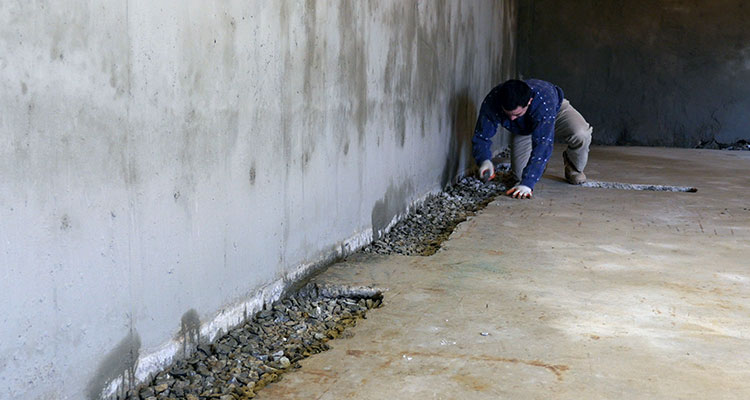What Does Waterproofing Auckland Do?
Table of ContentsWaterproofing Auckland - An OverviewAll about Waterproofing AucklandWaterproofing Auckland Things To Know Before You Get ThisThe Ultimate Guide To Waterproofing AucklandThe Ultimate Guide To Waterproofing AucklandThe Only Guide to Waterproofing Auckland
Waterproofing buildings is the approach of creating an obstacle over surface areas of structures, roofs, wall surfaces as well as other structural participants of buildings to avoid water infiltrations via these surfaces. In summary, constructing surfaces are made water-resistant and waterproof. Study has actually revealed that waterproofing just represents 1% of a building's construction costs but when ignored, it can be in charge of almost 90% of the damages.
You need to make sure that you obtain the appropriate kinds of waterproofing materials for your one-of-a-kind requirements. These are easily offered from providers of masonry products like, and also they're very easy to blend as well as use.
Polyurethane fluid membrane approach of waterproofing is usually utilized for the flat roof location and also exposed to weathering. This sort of waterproofing product is extremely conscious dampness content present. For that reason, prior to application, it is crucial to be extra mindful in examining the wetness content of the concrete slab, or else peeling off or de-bonding of membrane layers might happen after time.
It supplies more versatility than the cementitious kinds of waterproofing. At the end of the day, there are several unique types of waterproofing products out there. Some are extra effective than others. With this in mind, it is essential to recognize that not all of them are equal. Therefore, you need to take a while to discover which one is mosting likely to work best for your individualistic task needs.
Little Known Questions About Waterproofing Auckland.
Just how does cellar waterproofing work? Inside basement waterproofing functions by resolving water infiltration where it manifests itself inside.

Exterior cellar waterproofing techniques relieve this stress by redirecting water into a gravel-covered footing drain, which lugs it far from the home. While both techniques of basement waterproofing job well, they take care of the issue in different means. Interior cellar waterproofing stays a prominent option due to its comparatively small cost point, while outside basement waterproofing functions for homeowners that like to prevent interior building and construction work.
Contact us today to get more information concerning the basement waterproofing job we carry out for Georgia property owners.
Excitement About Waterproofing Auckland
Interior areas of our residence must be maintained completely dry from roof to basement. Waterproofing the home prior to construction will certainly prevent these troubles. If you water resistant your house, it will certainly prevent damage later.
y. It aids lower moisture inside your house as well as therefore secures points inside read what he said your home from damage created as a result of humidity or water exposure. It is additionally crucial for the accuracy of the building. Depending on the level of water damage or proprietor choice, waterproofing systems can be mounted inside or outdoors.
The poly acrylic chemical service is prepared which is used to secure the damage or leakage on the wall surface and also terrace which will be a solid water resistant base as well as secure and also preserve the stamina of any type of framework. This is done by an extremely educated expert group. You need to make certain that high-quality items are utilized for the procedure.
The final step is to put two layers of poly acrylic chemical with white concrete externally. is excellent for buildings and also frameworks that are already having leakage or damage along with for brand-new frameworks to avoid leakage in future. This process helps in keeping the life and also top quality of the structure and also guarantees that there is no damages to the building as a result of the rains.
The 2-Minute Rule for Waterproofing Auckland

Apply a thick cement slurry over the surface of the slab. Over this coat, use a completing coat with cement sand mortar 1:4 and also water-proofing compound as per the layout.
Make a side in between the parapet and also the sloping slab on the second day. Treat this waterproofing for fifteen days, with damp gunny bags spread out over it.
The Basic Principles Of Waterproofing Auckland
Likewise, check the density of the Shahbad floor tiles. It needs to be between 32mm to 40mm (1 1/4 to 1 1/2). Maintain the break joint pattern while repairing the Shahabad ceramic tiles for the base. After taking care of the Shahabad tiles, grout the joints with concrete slurry entirely. Seal the joints in between the Shahabad tiles with the assistance of C.M.
For the cellar, the provision of seamless gutter as check these guys out well as sump is made in P.C.C. itself and also Shahabad base is also prepared in the exact same fashion. The rain gutter is offered a correct incline towards the sump. This provision is a preventative procedure versus the periodic entry of rain in the basement. Over the plastered Shahabad base, boating slab is cast and also the R.C.C.
Rough Shahbad ceramic tiles are after that repaired to the upright pardi from the exterior. Apply cool concrete paste on the four corners and also in the facility of the 25mm (1) Shahabad ceramic tile, Press this ceramic tile securely over the R.C.C. pardi in line as well as level. At one time, fix only an elevation of 1.
Facts About Waterproofing Auckland Revealed
loaded with concrete slurry and also say goodbye to slurry is absorbed. Cure it for at least seven days, a minimum of ten times a day. After treating, give the final jointless water-proof plaster layer in C.M. 1:4 over the rough Shahabad. The entire procedure mentioned over types a box around the framework and also does not enable any investigate this site water to permeate with or leakage from the cellar.